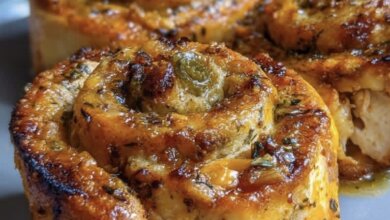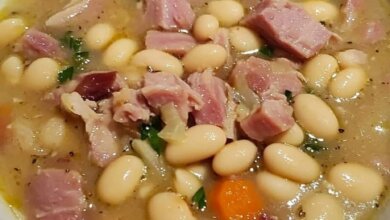Homemade Pizza Dough Recipe

Homemade Pizza Dough Recipe
Introduction:
Homemade pizza dough is a classic and versatile recipe that forms the foundation for countless delicious pizza varieties.
Creating your own pizza dough allows you to control the ingredients, ensuring a fresh and flavorful base that elevates your
pizza-making experience. This easy-to-follow recipe brings the pizzeria to your kitchen, enabling you to craft a perfect crust
with a crispy exterior and a soft, chewy interior. Whether you prefer thin crust or thick, this homemade pizza dough will become
a go-to for your pizza nights.
Ingredients:
- 2 1/4 teaspoons (1 packet) active dry yeast
- 1 teaspoon sugar
- 1 cup warm water (110°F/45°C)
- 2 1/2 cups all-purpose flour, plus extra for dusting
- 2 tablespoons olive oil
- 1 teaspoon salt
Instructions:
-
Activate the Yeast: In a small bowl, combine the active dry yeast, sugar, and warm water. Stir gently and
let it sit for about 5 minutes, or until the mixture becomes frothy. This step ensures that the yeast is alive and active,
which is essential for the dough to rise. -
Mix the Dry Ingredients: In a large mixing bowl, combine the all-purpose flour and salt. Make a well in the
center of the flour mixture. -
Combine Wet and Dry Ingredients: Pour the yeast mixture and olive oil into the well of the flour mixture.
Stir together with a spoon until the dough starts to come together. It will be sticky at first, but this is normal. -
Kneading the Dough: Transfer the dough to a lightly floured surface. Knead the dough for about 5-7 minutes
until it becomes smooth and elastic. This process helps develop the gluten, giving the dough its characteristic chewiness. -
First Rise: Place the kneaded dough in a greased bowl and cover it with a clean kitchen towel. Allow it to
rise in a warm place for about 1-2 hours or until it doubles in size. The warm environment encourages the yeast to ferment,
making the dough rise. -
Punch Down and Shape: Once the dough has risen, punch it down to release any air bubbles. Divide the dough
in half if you prefer thin-crust pizzas, or use the entire dough for a thicker crust. -
Rolling Out the Dough: Roll out the dough on a floured surface to your desired thickness and shape. For a
circular pizza, use your hands or a rolling pin to stretch the dough evenly. -
Prepare for Baking: Transfer the dough to a baking sheet or pizza stone lined with parchment paper. Let the
dough rest for about 10 minutes while preheating the oven to 475°F (245°C). -
Add Toppings and Bake: Add your favorite pizza toppings (sauce, cheese, vegetables, meats, etc.) and bake
for 12-15 minutes, or until the crust is golden brown and the cheese is melted and bubbly.
History of Pizza Dough:
Pizza traces its roots to ancient civilizations, such as the Egyptians, Greeks, and Romans, who baked flatbreads topped with
various ingredients. However, the modern pizza as we know it originated in Naples, Italy, during the 18th century. Neapolitans
began adding tomatoes to their flatbreads, which had been brought to Europe from the Americas. The concept of pizza dough gained
prominence with the development of the classic Neapolitan pizza, characterized by a simple dough made of flour, yeast, water,
and salt. The tradition has since evolved, with countless variations and techniques emerging worldwide.
Benefits of Homemade Pizza Dough:
- Control Over Ingredients: You can choose quality ingredients, adjust salt content, and avoid preservatives found in store-bought dough.
- Customizable Thickness: Make thin or thick crusts depending on your preference.
- Healthier Choice: Freshly made dough can be a healthier alternative, especially if using whole-grain flour or adding herbs and spices.
- Cost-Effective: Making your own dough is typically cheaper than buying pre-made or ordering pizza.
- Fun for Families: The process of making dough can be a fun activity, especially for children, allowing everyone to be involved in pizza-making.
Formation and Techniques:
To form the perfect pizza dough, follow these tips:
- Use Warm Water: Yeast thrives in warm temperatures. Water that is too hot can kill the yeast, while cold water will slow down the rising process.
- Kneading Technique: Kneading develops the gluten in the flour, which provides structure. Stretch and fold the dough over itself, turning it occasionally, for the best results.
- Letting the Dough Rest: Allowing the dough to rise is essential for a light, airy texture. If time allows, an overnight rise in the refrigerator will enhance the flavor.
- Rolling vs. Stretching: For a more authentic pizza, stretch the dough by hand rather than using a rolling pin. This helps to retain air bubbles in the dough for a chewier texture.
Nutrition:
The nutritional content of the pizza dough will depend on the toppings used, but the base dough typically contains:
- Calories: Approximately 300-400 per serving (for one slice of a 12-inch pizza base)
- Carbohydrates: Around 60-70 grams
- Protein: 8-10 grams
- Fat: 4-6 grams
- Fiber: 2-3 grams
Using whole-grain flour or adding seeds can increase the fiber content and make the dough more nutritious.
Conclusion:
Homemade pizza dough is more than just a base for your favorite toppings; it’s a canvas for culinary creativity. By mastering this simple dough recipe,
you can explore countless variations of pizza, from traditional Margherita to gourmet creations with unique ingredients. The process of making dough
from scratch not only enhances the flavor but also provides a sense of accomplishment, making every bite even more enjoyable.
Pizza Lovers:
Pizza is loved by millions around the world for its versatility and satisfying taste. From New York-style thin crust to Chicago’s deep-dish,
each region has its own take on this classic dish. People who enjoy cooking at home will find making pizza dough a rewarding experience,
while families can bond over the fun of creating their own personalized pizzas. Whether you prefer a simple cheese pizza or one loaded with toppings,
homemade dough brings an authentic touch that is sure to please any pizza lover.
Summary:
Making homemade pizza dough allows for a tailored, fresh, and flavorful pizza experience. The key is to use quality ingredients,
knead properly, and give the dough enough time to rise. The result is a delicious, versatile dough that serves as the perfect
foundation for any pizza lover’s culinary creations.



